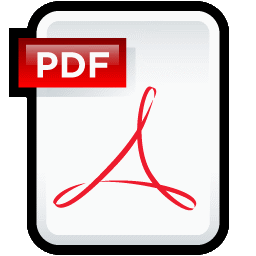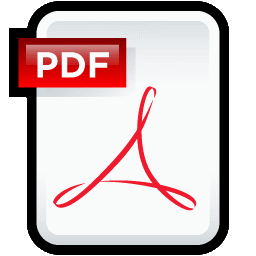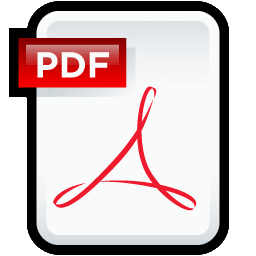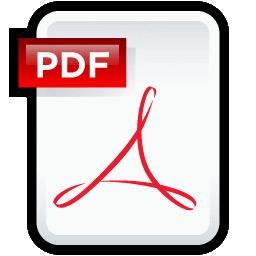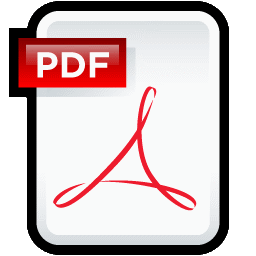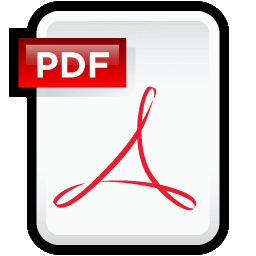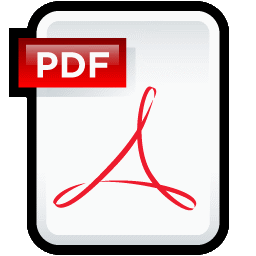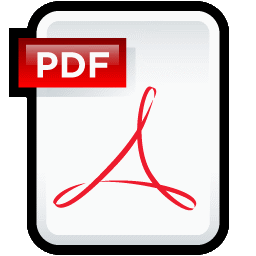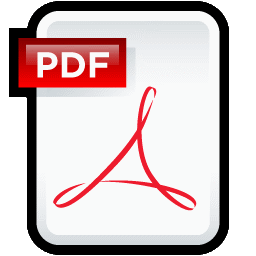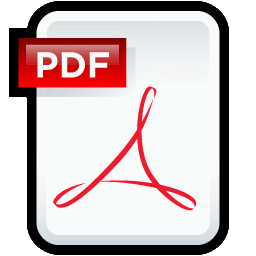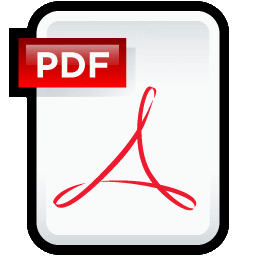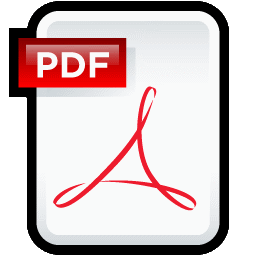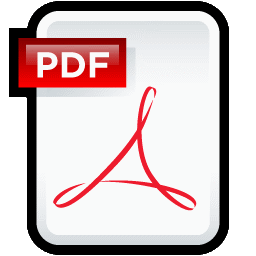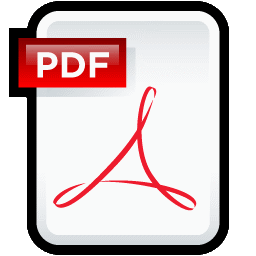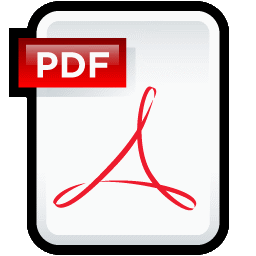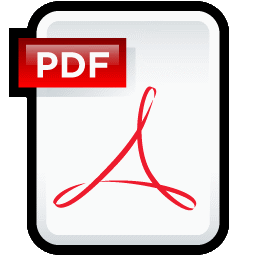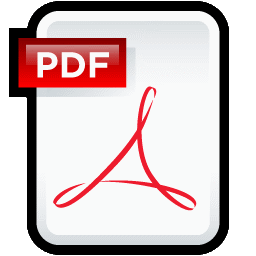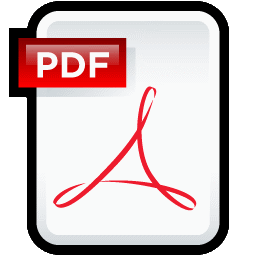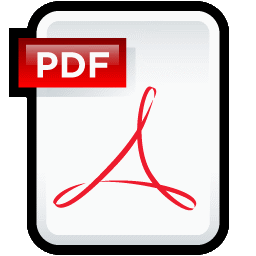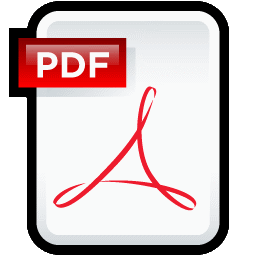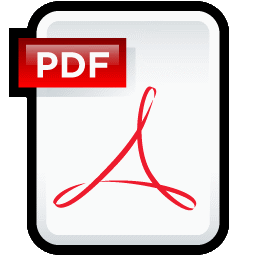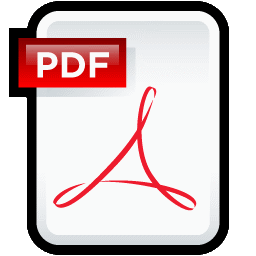Files posted by Cliff
-
Not for implementation. Contains non-binding recommendations.
Docket Number:
FDA-2024-D-1243
Issued by:
Center for Biologics Evaluation and Research
Allogeneic cells of human origin may be expanded in culture to manufacture medical products consisting of live cells, inactivated cells, cell lysates, or other cell-based materials such as cell-derived particles. We, FDA, are providing you, sponsors of allogeneic cell-based medical products, recommendations for determining the appropriate cell safety testing to support an Investigational New Drug Application (IND) or a Biologics License Application (BLA). Cell safety testing should be based on a risk analysis that considers the expansion potential of the cells, the reagents that are used to expand the cells in culture, and the number of individuals the cell-based medical product is capable of treating.
This guidance supplements the following two final guidances:
“Chemistry, Manufacturing, and Control (CMC) Information for Human Gene Therapy Investigational New Drug Applications (INDs); Guidance for Industry,” dated January 2020 , and
“Guidance for FDA Reviewers and Sponsors: Content and Review of Chemistry, Manufacturing, and Control (CMC) Information for Human Somatic Cell Therapy Investigational New Drug Applications (INDs),” dated April 2008.
-
Not for implementation. Contains non-binding recommendations.
Docket Number:
FDA-2024-D-4311
Issued by:
Center for Biologics Evaluation and Research
This guidance is intended to provide industry with answers to frequently asked questions (FAQs) and commonly faced issues that arise during the development of cellular and gene therapy (CGT) products and is intended to help facilitate the development of safe, effective, and high-quality CGT products. The FAQs represent common questions directed to the Agency and span multiple disciplines, including regulatory review, chemistry, manufacturing, and controls (CMC), pharmacology/toxicology (PT), clinical, and clinical pharmacology.
In general, FDA’s guidance documents, including this guidance, do not establish legally enforceable responsibilities. Instead, guidances describe the FDA’s current thinking on a topic and should be viewed only as recommendations, unless specific regulatory or statutory requirements are cited. The use of the word should in FDA’s guidances means that something is suggested or recommended, but not required. -
This guidance addresses the regulatory requirements for determining donor eligibility that apply to establishments that collect blood and blood components (blood establishments) for transfusion or for further manufacturing use, including Source Plasma. In the final rule dated May 22, 2015 (Requirements for Blood and Blood Components Intended for Transfusion or for Further Manufacturing Use (donor eligibility rule)) (Ref. 1), FDA (we) amended the regulations applicable to blood establishments for determining donor eligibility and testing blood and blood components. The revised requirements were implemented in order to assure the safety of the blood supply and to protect donor health. The donor eligibility rule became effective on May 23, 2016.
-
We, FDA, Center for Biologics Evaluation and Research (CBER), are recognizing as acceptable for use by you, manufacturers of blood and blood components, subject to United States statutes and regulations, the document entitled “United States Industry Consensus Standard for the Uniform Labeling of Blood and Blood Components Using ISBT 128,” Version 4.0.0, dated January 2024 (Version 4.0.0 Standard). The Version 4.0.0 0 Standard is the revised version of the “United States Industry Consensus Standard for the Uniform Labeling of Blood and Blood Components Using ISBT 128,” Version 3.0.0, dated March 2013.
The Version 4.0.0 Standard describes a system of uniform container labels for blood and blood components intended for transfusion or for further manufacturing use. We believe that this uniform container label standard will assist manufacturers in complying with the container label requirements under Title 21 of the Code of Federal Regulations 606.121 (21 CFR 606.121). This guidance supersedes the guidance of the same title dated June 2014.
-
The purpose of this guidance is to provide recommendations on the development of blood collection, processing, and storage systems (e.g., blood bags with anticoagulant and additive solutions, empty bags for platelet pooling) intended for the manufacture of blood and blood components for transfusion using the buffy coat (BC) method. This guidance is intended for manufacturers of blood collection, processing, and storage systems. The recommendations in this guidance do not apply to devices used to manufacture platelet rich plasma or similar products used for therapeutic purposes other than transfusion.
-
We, the Food and Drug Administration (FDA), Center for Biologics Evaluation and Research, are recognizing as acceptable for use by you, manufacturers of blood and blood components intended for transfusion, the document entitled “Circular of Information for the Use of Human Blood and Blood Components,” dated June 2024 (June 2024 Circular). The June 2024 Circular provides specific labeling instructions for the administration and use of blood and blood components intended for transfusion. We believe that the June 2024 Circular will assist you in complying with labeling requirements under 21 CFR 606.122. The requirements under 21 CFR 606.122 specify that a circular of information must be available for distribution with blood and blood components intended for transfusion. Section 606.122 further specifies the information that is required in the circular of information. This guidance supersedes the guidance of the same title updated March 2022.
-
This guidance provides FDA’s recommendations to blood establishments for the submission of a Biologics License Application (BLA) for the manufacture of COVID-19 convalescent plasma for transfusion intended to treat patients with immunosuppressive disease or receiving immunosuppressive treatment in either the outpatient or inpatient setting. The guidance also provides FDA’s recommendations for Investigational New Drug applications (INDs) for investigational COVID-19 convalescent plasma for transfusion.
FDA is implementing this guidance without prior public comment because the Agency has determined that prior public participation is not feasible or appropriate (see 21 CFR 10.115(g)(2) and (g)(3)). FDA made this determination because we recognize that SARS-CoV-2 continues to circulate and COVID-19 remains a serious health risk, especially for patients with immunosuppressive disease or receiving immunosuppressive therapy. FDA’s recommendations on the development of drugs and biological products for treatment and prevention of COVID-19 is necessary to address an unmet public health need.
-
Docket Number: 2002D-0081 Issued by: Center for Biologics Evaluation and Research Blood establishments are required under 21 CFR 610.40(a)(3) and (b) to test donations of human blood and blood components for hepatitis B virus using approved screening tests that are adequate and appropriate for this purpose. One test used to detect the presence of hepatitis B infection is the hepatitis B surface antigen (HBsAg) test.
-
Docket Number: FDA-2022-D-0499 Issued by: Center for Biologics Evaluation and Research On August 8, 1995, FDA issued a memorandum to all registered blood and plasma establishments entitled, "Recommendations for Donor Screening with a Licensed Test for HIV-1 Antigen". This memorandum supplements that memorandum and provides additional recommendations regarding storage of samples for HIV-1 antigen testing as well as clarifications of the previous recommendations regarding specific implementation issues.
-
Docket Number: FDA-2022-D-0498 Issued by: Center for Biologics Evaluation and Research On April 23, 1992, August 5, 1993, and August 19, 1993, FDA issued memoranda to all registered blood and plasma establishments, which provided recommendations for testing for antibody to Hepatitis C Virus Encoded Antigen (anti-HCV). This memorandum supplements those previous memoranda by transmitting additional recommendations for testing for antibody to anti-HCV in blood establishments. (See attached recommendations.)
In a public meeting of the Blood Products Advisory Committee (BPAC) on March 21, 1996, after review and discussion of the relevant information available, concern was expressed that the use of a supplemental test for anti-HCV that uses fewer antigens than the screening test for anti-HCV may cause uncertainties. In particular, the Committee discussed its concern that the use of the Chiron RIBA HCV 2.0 Immunoblot Assay (SIA) as a supplemental test for anti-HCV should not be used for donor re-entry if the Ortho™ HCV Version 3.0 ELISA Test System was used as a screening test. FDA has considered the BPAC concerns and sets forth in the attached recommendations donor re-entry and counseling procedures that should be used in this situation.
-
Docket Number: FDA-2008-D-0263 Issued by: Center for Biologics Evaluation and Research We, FDA, are issuing this guidance to provide you1 with recommendations for testing donations of Whole Blood and blood components for West Nile Virus (WNV) using an FDA-licensed donor screening assay2 . We believe that the use of a licensed nucleic acid test (NAT) will reduce the risk of transmission of WNV, and therefore recommend that you use a licensed to screen donors of Whole Blood and blood components intended for transfusion for infection with WNV.
-
Docket Number: FDA-2018-D-3324 Issued by: Center for Biologics Evaluation and Research We, FDA, are providing you, blood collection establishments, with recommendations regarding the use of serological tests to reduce the risk of transmission of human T-lymphotropic virus type I (HTLV-I) and type II (HTLV-II), collectively referred to as HTLV-I/II, by blood and blood components. These recommendations apply to the collection of Whole blood and blood components, except Source Plasma.
-
Docket Number: FDA-2009-D-0137 Issued by: Center for Biologics Evaluation and Research We, FDA, are providing you, blood collection establishments, with recommendations regarding the use of serological tests to reduce the risk of transmission of Trypanosoma cruzi (T. cruzi) infection in blood and blood components. These recommendations apply to the collection of blood and blood components, except Source Plasma, for transfusion or for use in manufacturing a product, including donations intended as a component of, or used to manufacture, a medical device.
-
Docket Number: FDA-2022-D-0486 Issued by: Center for Biologics Evaluation and Research Sterile connecting devices produce sterile welds between two pieces of compatible tubing. This procedure permits sterile connection of a variety of containers and tube diameters. This guidance describes recommended practices and procedures for use of these devices. This guidance does not address the data or information that a manufacturer of a sterile connecting device must submit to FDA in order to obtain approval or clearance for marketing. It is also important to note that the use of an approved or cleared sterile connecting device for purposes not authorized in the labeling may cause the device to be considered adulterated and misbranded under the Federal Food, Drug and Cosmetic Act.
-
Docket Number: FDA-2013-S-0613 Issued by: Center for Biologics Evaluation and Research The increased number of automated plasma collection devices with varying capacities for tailoring each collection to the specific donor has resulted in the existence of multiple Food and Drug Administration (FDA) approved nomograms which specify, for each piece of equipment, the maximum volume of plasma to be harvested from each donor category. Current considerations in determining the volume of plasma to be collected include gender, height, weight, hematocrit, and in some centers, the length of time in process or the number of cycles. Because multiple equipment types commonly coexist in a location, the potential for error due to application of an inappropriate nomogram is significantly increased. The use of various anticoagulant solutions, differing concentrations of the anticoagulant, and a range of anticoagulant to plasma ratios, additionally complicates some schema and creates additional opportunity for error.
-
Docket Number: FDA-2007-D-0019 Issued by: Center for Biologics Evaluation and Research "Computer crossmatch" is a process used to ensure that blood released for transfusion is compatible with the intended recipient.1 We, FDA, are issuing this guidance to assist you, blood establishments that perform compatibility testing using a computer crossmatch system to perform computerized matching of blood, consistent with current good manufacturing practice (CGMP) requirements in 21 CFR Parts 210, 211 and 606. Blood establishments must have standard operating procedures (SOPs) "to demonstrate incompatibility between the donor’s cell type and the recipient’s serum or plasma type" under the compatibility testing requirements in 21 CFR 606.151(c). This guidance describes practices that we believe satisfy the requirements in 21 CFR 606.151(c) to help ensure detection of an incompatible crossmatch when using a computerized system for matching a donor’s cell type with a recipient’s serum or plasma type.
-
Docket Number: 2002D-0080 Issued by: Center for Biologics Evaluation and Research Blood and plasma establishments (hereafter referred to as “blood establishments”) that collect blood and blood components intended for transfusion or for further manufacture may present donor screening questions to the donor by several methods. The blood establishment should choose the method that works best within its donor screening procedures. This guidance is intended for those blood establishments that wish to implement self-administered donor questionnaires, which allow donors to answer the pre-donation questions on their own; however, you (the blood establishment) may elect to continue to administer the donor questions by direct oral questioning. The guidance provides the recommendations of the Food and Drug Administration (FDA) for implementing self-administered donor questionnaires. In addition, the guidance describes the information the licensed blood establishments should include in a biologics license application supplement or annual report when they intend to implement self-administered questionnaires. This guidance finalizes the draft guidance of the same title dated April 2002. It also supersedes Section I.A of FDA’s memorandum dated April 23, 1992, entitled “Revised Recommendations for the Prevention of Human Immunodeficiency Virus (HIV) Transmission by Blood and Blood Products.”
-
Docket Number: FDA-2019-D-1876 Issued by: Center for Biologics Evaluation and Research Center for Devices and Radiological Health The Food the Drug Administration (FDA or we) is providing recommendations on the testing for interference by biotin on the performance of in vitro diagnostic devices (IVDs). This guidance is intended to help device developers and clinicians understand how FDA recommends biotin interference testing be performed, and how the results of the testing should be communicated to end-users, including clinical laboratories and clinicians. The recommendations apply to IVDs, including devices that are licensed under section 351 of the Public Health Service Act (42 U.S.C. 262) and used in donor screening, that use biotin technology. This guidance finalizes the draft guidance of the same title dated June 2019.
-
Docket Number: FDA-2011-D-0799 Issued by: Center for Biologics Evaluation and Research We, FDA, are providing you, blood establishments that collect Whole Blood and blood components for transfusion or for further manufacture, including recovered plasma, Source Plasma and Source Leukocytes, with recommendations concerning the use of FDA-licensed nucleic acid tests (NAT) to screen blood donors for hepatitis B virus (HBV) deoxyribonucleic acid (DNA). We are also providing you with recommendations for product testing and disposition, donor management, methods for donor requalification, and product labeling.
-
Docket Number: FDA-2013-S-0612 Issued by: Center for Biologics Evaluation and Research This memorandum transmits Revised Recommendations for Testing for Antibody to Hepatitis C Virus Encoded Antigen (Anti-HCV) in Blood Establishments, August, 1993. These revised recommendations modify those issued on April 23, 1992, in regard to testing for anti-HCV. A donor who currently tests, or who in the past had tested, repeatedly reactive for anti-HCV with a solid phase enzyme linked immunoassay (ELISA), licensed by the Food and Drug Administration (FDA), may now be considered for re-entry provided that certain criteria, described in this document, are fulfilled.
-
Docket Number: 99D-2213 Issued by: Center for Biologics Evaluation and Research To reduce infectious disease transmission by blood and blood products, donor samples from blood donations are tested for markers of pathogenic bloodborne infections, including antibodies, antigens, and nucleic acids that may indicate the presence of etiologic agents such as human immunodeficiency virus (HIV), hepatitis B virus (HBV), hepatitis C virus (HCV), human T-cell lymphotropic virus (HTLV), cytomegalovirus (CMV), syphilis, and others. The validity of screening and supplemental (confirmatory) test assay results is determined by the performance of test kit manufacturer supplied reagents labeled as Acontrols@, used in accordance with the test kit instructions.
-
Docket Number: 2005D-0438 Issued by: Center for Biologics Evaluation and Research We, FDA, are providing you, Investigational New Drug Application (IND) sponsors and Biologics License Application (BLA) applicants, recommendations for testing the safety and efficacy of Immune Globulin Intravenous (Human) (IGIV) products as replacement therapy in primary humoral immunodeficiency. The document provides guidance on general principles concerning clinical trial design to evaluate safety, efficacy, and pharmacokinetics of investigational IGIV products and is intended to assist you in the preparation of the clinical/biostatistical and human pharmacokinetic sections of a BLA. This guidance does not address evidence of clinical efficacy for other indications, or other sections of a BLA such as chemistry, manufacturing, and controls and preclinical toxicology.

